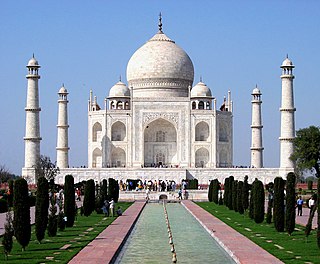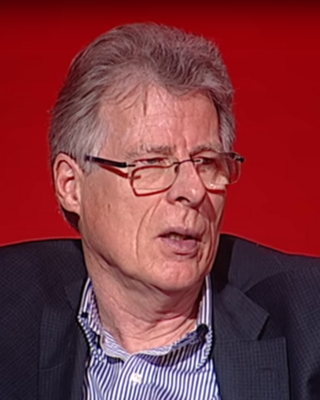
The Timurid Empire was a late medieval, culturally Persianate Turco-Mongol empire that dominated Greater Iran in the early 15th century, comprising modern-day Iran, Iraq, Afghanistan, much of Central Asia, the South Caucasus, as well as parts of contemporary Pakistan, North India and Turkey. The empire was culturally hybrid, combining Turko-Mongolian and Persianate influences, with the last members of the dynasty being "regarded as ideal Perso-Islamic rulers".

The Qara Qoyunlu or Kara Koyunlu, also known as the Black Sheep Turkomans, were a culturally Persianate, Muslim Turkoman monarchy that ruled over the territory comprising present-day Azerbaijan, Armenia, northwestern Iran, eastern Turkey, and northeastern Iraq from about 1374 to 1468.

A Persianate society is a society that is based on or strongly influenced by the Persian language, culture, literature, art and/or identity.

Indo-Persian culture refers to a cultural synthesis present in the Indian subcontinent. It is characterised by the absorption or integration of Persian aspects into the various cultures of modern-day republics of Pakistan, India and Bangladesh. The earliest introduction of Persian influence and culture to the subcontinent was by various Muslim Turko-Persian rulers, such as the 11th-century Sultan Mahmud Ghaznavi, rapidly pushed for the heavy Persianization of conquered territories in northwestern Indian subcontinent, where Islamic influence was also firmly established. This socio-cultural synthesis arose steadily through the Delhi Sultanate from the 13th to 16th centuries, and the Mughal Empire from then onwards until the 19th century. Various Muslim dynasties of Turkic, local Indian and Afghan origin patronized the Persian language and contributed to the development of a Persian culture in India. The Delhi Sultanate developed their own cultural and political identity which built upon Persian and Indic languages, literature and arts, which formed the basis of an Indo-Muslim civilization.

The Kiani Crown was the traditional coronation crown in the Iranian Crown Jewels, worn by the Qajar shahs of Iran (1789–1925). The crown was designed under the first Qajar shah Agha Mohammad Khan Qajar as a way to connect himself to the ancient Sasanian shahs (224–651) and mythological Kiyani shahs.

The Suhrawardiyya is a Sufi order founded by Abu al-Najib Suhrawardi. Lacking a centralised structure, it eventually divided into various branches. The order was especially prominent in India. The ideology of the Suhrawardiyya was inspired by Junayd of Baghdad, a Persian scholar and mystic from Baghdad.

Iranian Studies is a bimonthly peer-reviewed academic journal covering Iranian and Persianate history, literature, and society published by Cambridge University Press on behalf of the Association for Iranian Studies. It is published 6 times a year and was established in 1967. The editor-in-chief is Sussan Siavoshi. The journal is abstracted and indexed in the MLA International Bibliography.

Tajrish is a neighbourhood of Tehran, capital of Iran. Administratively it is in Shemiranat County, Tehran Province. It used to be a village and later was absorbed into the city of Tehran.

Hatef Esfahani was an 18th-century poet based in Isfahan during the collapse of the Safavid dynasty of Iran and the chaos that followed. He was one of the earliest and leading members of the literary movement Bazgasht-e adabi, which advocated for a return to the fundamentals of classical Persian poetry in protest against the excessively "unnatural" nature of the Indian style that dominated poetry in Iran and Persian-speaking India.

The Aq Qoyunlu or the White Sheep Turkomans was a culturally Persianate, Sunni Turkoman tribal confederation. Founded in the Diyarbakir region by Qara Yuluk Uthman Beg, they ruled parts of present-day eastern Turkey from 1378 to 1503, and in their last decades also ruled Armenia, Azerbaijan, much of Iran, Iraq, and Oman where the ruler of Hormuz recognised Aq Qoyunlu suzerainty. The Aq Qoyunlu empire reached its zenith under Uzun Hasan.
The composite Turko-Persian, Turco-Persian, or Turco-Iranian is the distinctive culture that arose in the 9th and 10th centuries in Khorasan and Transoxiana. According to the modern historian Robert L. Canfield, the Turco-Persian tradition "was "Persianate" in that it was centered on a lettered tradition of Iranian origin; it was Turkish in so far as it was for many generations patronized by rulers of Turkic ancestry; and it was "Islamicate" in that Islamic notions of virtue, permance, and excellence infused discourse about public issues as well as the religious affairs of the Muslims, who were the presiding elite."

Vahshi Bafqi was a Persian poet of the Safavid era, considered to be one of the greatest of his generation.

Hazin Lahiji, was an Iranian historian, theologian and philosopher.
Saïd Amir Arjomand is an Iranian-American scholar and Distinguished Service Professor of Sociology at Stony Brook University, Long Island, and Director of the Stony Brook Institute for Global Studies. He received his Ph.D. in 1980 from the University of Chicago.

In architecture, a hasht-behesht, literally meaning "eight heavens" in Persian, is a type of floor plan consisting of a central hall surrounded by eight rooms, the earliest recognized example of which in Iranian architecture is traced to the time of the Persianate Timurid Empire. The term was used in Persian literature as a metaphorical image, and was later notably used in a poem by Indian poet Amir Khusrow, who gave the most comprehensible literary reconstruction of the model in his adaptation of an Iranian epic about Sasanian ruler Bahram V, as well as in other works by Ottoman poets Sehi Bey and Idris Bitlisi. The architectural form was adopted and used also in Ottoman and Mughal architectures.

Abbas Amanat is an Iranian-born American historian, scholar, author, editor, and professor. He serves as the William Graham Sumner Professor of History at Yale University and Director of the Yale Program in Iranian Studies.

The Association for the Study of Persianate Societies, also known as ASPS, is an academic institution for researchers and scholars interested in the culture and civilization of the Persian-speaking societies and related areas. The association's head office is based in New York. ASPS is one of the partner organisations of Middle East Studies Association of North America.

Rudolph P. Matthee, best known as Rudi Matthee, is John and Dorothy Munroe Distinguished Professor of History in the History Department at the University of Delaware, teaching Middle Eastern history and specializing in the history of early modern Iran. He received his PhD in 1991 from the University of California. Matthee is a member of the Association for the Study of Persianate Societies, for which he also functioned as president twice in 2003-2005 and 2009–2011. He is the author of numerous books and articles on Safavid and Qajar Iran.

Parvaneh Pourshariati is an Iranian-born American historian of Middle Eastern studies, scholar, and educator. She is an Associate Professor of History at New York City College of Technology (CUNY), and former president of the Association for the Study of Persianate Societies. She specializes in the late antique, early medieval and modern histories of Iran and the Middle East.
Hirotake Maeda is Professor of History at the Faculty of Humanities and Social Sciences of Tokyo Metropolitan University. He specializes in Middle Eastern Studies, Eurasian Studies, and the histories of Iran and the Caucasus. He focuses in particular on the origins of the gholam military "slaves" of Safavid Iran and their role and position in Iran's history, using Persian and Georgian sources.

















